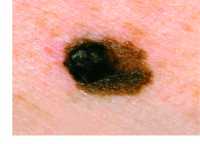Author Interviews, Immunotherapy, Rheumatology / 29.03.2023
Rheumatoid Arthritis: After DMARD Therapy, Some Patients May Remain Drug Free
MedicalResearch.com Interview with:
Siri Lillegraven MD MPH PhDVice director, REMEDY Center for treatment of Rheumatic and Musculoskeletal Diseases
Leader, Unit for Clinical Research, Diakonhjemmet HospitalAssociate professor, Institute of Health and Society, Faculty of Medicine
University of Oslo
MedicalResearch.com: What is the background for this study?
Response: Rheumatoid arthritis, or RA, is a chronic disease, with joint inflammation as the primary manifestation. Due to advances in RA therapy and care, an increasing number of patients achieve sustained remission without joint damage progression and functional loss. For these patients, dose-reduction of disease modifying anti-rheumatic drugs (DMARDs), or complete withdrawal of therapy could be favorable due to potential reductions in adverse events, burden of taking medication, and healthcare costs. Current treatment recommendations suggest that tapering of conventional synthetic DMARDs could be considered in patients in sustained remission, but there is a lack of data to guide treatment decisions.
(more…)



